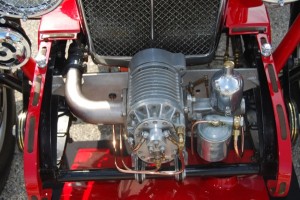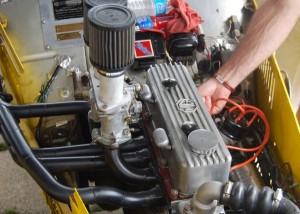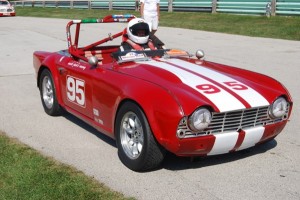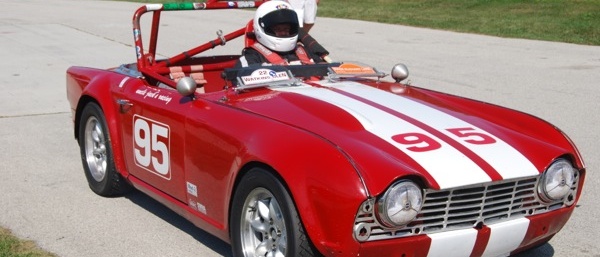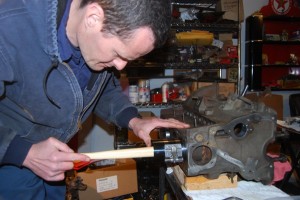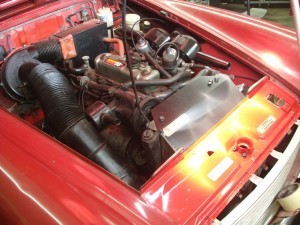 When Humpty-Dumpty fell off the wall, all the King’s horses and all the King’s men couldn’t put him back together again. However, if Humpty Dumpy drove an MG, Triumph, Jaguar or Austin-Healey, he’d be able to get help putting his broken engine together. In fact, even engine parts for rare British cars like Sunbeam Tigers, Daimlers and Jensens can be found, because these cars shared parts with either other British makes or with American cars.
When Humpty-Dumpty fell off the wall, all the King’s horses and all the King’s men couldn’t put him back together again. However, if Humpty Dumpy drove an MG, Triumph, Jaguar or Austin-Healey, he’d be able to get help putting his broken engine together. In fact, even engine parts for rare British cars like Sunbeam Tigers, Daimlers and Jensens can be found, because these cars shared parts with either other British makes or with American cars.
Interest in British sports cars grew in the U.S. after World War II, when soldiers returning from England brought MG TCs home with them. Known as “America’s First Sports Car,” the rather archaic TC model was great fun to drive on winding country roads and in rallies and races. Soon, other cars from “across the pond” started catching on like wildfire. The sports car races held from coast to coast wore out little cars and created a need for hard-to-get imported parts in the U.S. It wasn’t long before suppliers popped up in the United States.
British Invasion
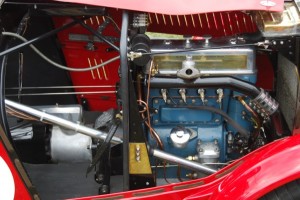
BOTTOM: This 1933 MG J3’s is one of 22 made. Its engine blew in a 1949 race at the Goodwood course in England. The pretty little J4 engine was fitted in 2006.
Al Moss was an early British parts retailer. His love of MG TCs drove his automotive interests. Moss had a side job repairing MGs. He rented a shop in Southern California that became a gathering place for sports car enthusiasts. Moss got involved in sports car racing, but had an accident and quit. Together with his friend Howard Goldman, he started focusing on parts and service.
Moss Motors was a service business, but as parts got harder to find, Moss began buying obsolete parts inventories and then started making some parts. By the ‘60s, the T Series MG had become a popular collector car and demand for restoration parts grew. Moss published his first parts catalog in 1962. He had an MG TD made into a truck and delivered parts directly to drivers at racing courses.
With growth in the ‘60s and ‘70s came new parts and catalogs for MGAs, MGBs, Austin-Healeys and Jaguar XK120-140-150s. In 1977, Moss purchased 48 tons of obsolete Triumph inventory from Standard Triumph in England. Goldman eventually bought the company. Moss became a large company and today has modern facilities in both California and Virginia.
The market for British car parts in general and engine parts in particular is larger than most people think and Moss Motors is far from the only source of parts. Over 30 years ago, a Kansas City area engineer named Leo Long, who had a passion for British made Sunbeam cars, started Long Motor Co. Today, the company employs over 400 people and warehouses over 40,000 parts in its large Lenexa, KS, facility. LMC sells parts for British cars, Japanese cars and American trucks. The British parts arm of the company is called Victoria British and specializes in supplying parts for the most popular British sports cars.
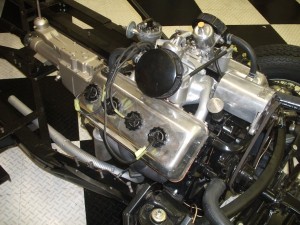
About 45 people work in the Victoria British business and they handle around 10,000 parts for MG, Sunbeam, Triumph and Austin-Healey models. Other British parts suppliers largely tend to focus on one type of car. Abington Spares specializes in T Series MGs, Scarborough Faire focuses on MGA models, the Roadster Factory is a Triumph specialist, Four in Tune is known for its Austin-Healey expertise and Spit Bits specializes in Triumph Spitfires. There are dozens of such niche players and most belong to a group known as the British Motor Trade Association (BMTA) that was formed in 2002. The BMTA website (www.britcar.org) lists contact information for 115 companies in the British car niche.
The interest in these cars boomed during the ‘50s and ‘60s, but started dropping by the early 1970s. Part of the reason was that the British manufacturers had difficulty making their products (which changed little over the years) conform to new U.S. emissions laws. Sporty AMXs, Camaros, Challengers, Cougars, ‘Cudas, Firebirds and Mustangs made in America arrived in the mid-1960s also stole away additional sales. By the early 1980s, all of the popular mass-market British sports cars were gone. Remaining were high-end Aston-Martins and Jaguars that only wealthy car buyers could afford.
Most British sports cars were small and cute and had small, high-stressed engines that put out much less horsepower than American muscle cars, but plenty of ponies for their size. Driving one is a noisy, wind-in-your-face experience that adds up to excitement on the road. An MG TD has around 52 hp and probably a top speed of 65, if that. However, 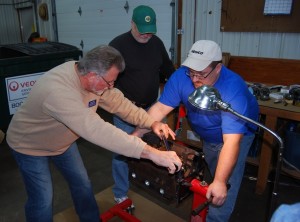 when you’re driving one that fast, you feel like you’re going 100 mph. It is what “motoring” is all about.
when you’re driving one that fast, you feel like you’re going 100 mph. It is what “motoring” is all about.
Thanks to their cute looks and appeal, British sports cars often got saved as they aged. MG Midgets and Triumph Spitfires didn’t take up much room and even many “Big Healeys” became third wheels in two-car garages. By the time the last cars made in 1980 turned 20, interest in collecting British sports cars was well along. This second wave of enthusiasm for the high-revving little cars was accompanied by a growing need for repair shops and replacement parts.
Fortunately, an infrastructure already existed in both areas. British cars had never been easy to fix. Corner garage mechanics often made them run worse than when they came in. British shop manuals seemed to be written in a foreign language. No wonder foreign car specialty shops popped up everywhere. In the ‘70s-‘80s, they became restoration shops.
Both Moss Motors and Victoria British Ltd. have a widespread dealer network built up by shops, dealers, car club
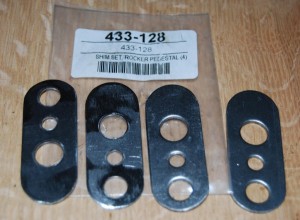
BOTTOM: Even small parts like these rocker arm pedestal shims are readily available from Moss Motors Ltd. and other British car parts suppliers.
members and even very active hobbyists. These sellers do not have set territories and many use club newsletters, websites, eBay and Craigslist to market the parts they purchase at a discount and sell for a profit. Engine parts sales account for a lot of business that these dealers see. Many of the early British sports car motors actually evolved from tractor engines and they tend to get rebuilt over and over again.
British sports car have a reputation for being tight-fitting, eccentric cars with “old school” engineering. There is a joke among enthusiasts that if you own a British sports car, you also need a cell phone to call for help and several good, car-savvy friends, so you don’t call on one friend for too much help. Actually, the early ‘50s models were fairly reliable because of their simplicity. Things became a little more problematic in the late-‘60s and ‘70s when the British automakers scrambled to meet the new American smog rules. This led to carburetor switches and all types of weird engine “plumbing” systems.
Today, many fixes have been worked out for the issues the cars were affected by years ago and talented engine builders are turning certain upgrades into profit centers. For instance, the original thrust bearings on Triumph TR6 engines – a popular six-cylinder model – have a history of wearing and causing crankshaft movement. In some cases, the wear will be so bad, you might find parts that fell into the block. In this case, a shop may have to weld the crank and the rear main cap. Then the machinist swings a full circle and fits thrust washers to the top and bottom on the rear face of the main cap. The thrust washers will be held in place with 1/8-inch tension pins. This will allow reducing the end float from the factory workshop manual’s limit of 0.010 inch to about 0.002-0.003 inches.
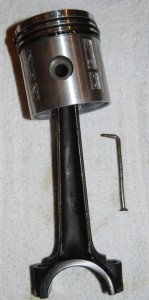
The fact that British cars have a reputation for needing lots of engine work isn’t exactly a bad thing for people who fix British car engines or sell parts for them. Enthusiasts seem to accept that repair and maintenance is part of the ownership experience – hence the jokes about needing cell phones and lots of friends. Enthusiasts actually enjoy having their cars torn apart and fixed or improved upon. This mentality among their ranks keeps those specialty repair shops humming and mail order parts requests coming in.
Oil leaks are another common problem that British engines have a reputation for.
Another humorous observation we’ve heard is that the reason the Brits made cars instead of computers is that they could not make computers leak oil! The cars — particularly the early postwar models — have ancient oil sealing setups using wood seals, rope seals or even no seals except a tight fir of metal parts. Companies such as Moss have worked out aftermarket kits promoted as a fix for this problem. Other repair shops push their own cures. British car owners view stopping oil leaks as a contest. Many are anxious to try the next possibility.
John Twist, who operates University Motors in Ada, MI, told Engine Builder that the British car business is strong today. “These are no longer the rusty, clapped out, poorly maintained British cars reminiscent of our college days in the ‘50s,” he explained. “Many of the British cars you see now are maintained at a high state of restoration and their engines are better than new.”
Twist, who followed his passion to England years ago and worked for the famed University Motors there, supplements his restorations with wintertime technical seminars. Thousands of British sports car buffs have taken his courses and hands-on workshops.
He also does a daily telephone Technical Hour from 1-2 pm EST during which he answers questions from British car restorers. He tells his students and callers, “If you want to go fast, buy a Corvette; if you want reliability, buy a Miata; if you want a sports car with a soul, buy a MG!”
Clubs Abound In The British Car Hobby
The Old Cars Weekly Auto Club Directory (www.oldcarsweekly.com/clubdirectory) lists over 35 national British car clubs, as well as local and
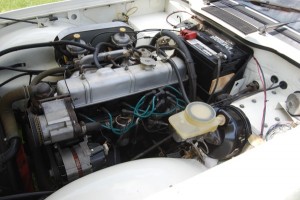
regional chapters and international clubs. The major clubs for popular brands of cars like Austin-Healey, Jaguar, MG and Triumph each have thousands of members. There are also clubs like the Fox Cities British Car Club (www.foxbrits.com), which has its own clubhouse complete with two car lifts, several workshops, tools and equipment, a winter car storage service, an English pub, a meeting room and a reference library. No wonder 150-member families with more than 200 British cars belong to FCBCC.
The growth of vintage racing is another trend that smiles on British engine parts suppliers and repair shops. Although these venues are planned as just-for-fun events, there is still a competitive spirit involved. It pushes enthusiasts who race their cars to drive them to their limits. This in itself increases the need for spare parts and mechanical overhauls of cars that are raced. On top of all this, there are parts like superchargers available to enhance performance and shops that specialize in race tuning, speed modifications and chassis strengthening.
Dick Lunney – executive editor of an MG magazine, sees the general British car hobby moving away from original restorations and towards sales of performance upgrades outside vintage racing. He told us, “The most significant recent change is the level of interest in “restifications” whereby classic British cars increasingly are fitted with upgraded or modern engines. This trend would have been frowned upon just a few years ago, but with younger people
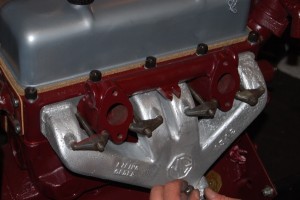
appreciating British cars – the need to stay factory original has declined.”
It’s hard to quantify exactly how big the British car hobby is. Companies like Moss and LMC will not talk about sales numbers or market trends. Unlike SEMA, the BMTA does not provide survey results or market research or other statistical information about the niche. Logic suggests the niche is larger than most experts think and is very active. As cars like the modern Mini build a huge following, and as classic Brit cars become resto-mods, we expect to see more and more British car engines getting both stock rebuilds and upgrades.
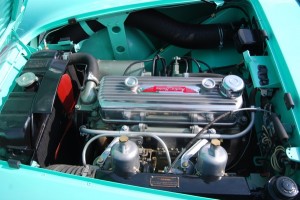
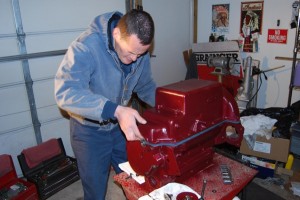
ABOVE: The MG TD XPAG engine started as a Morris tractor motor. In some years a finned oil pan was fitted and in others this smooth oil pan was used.
